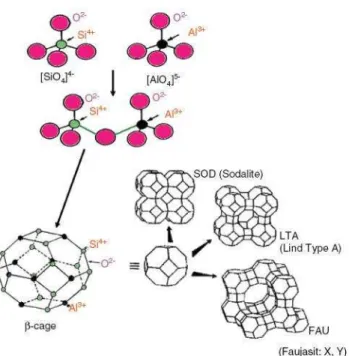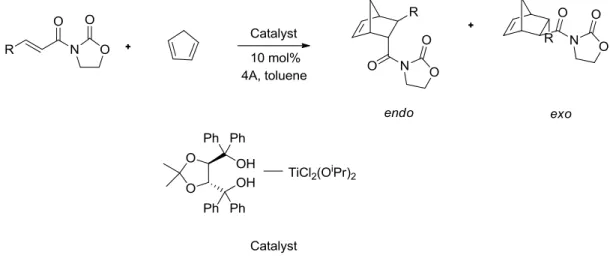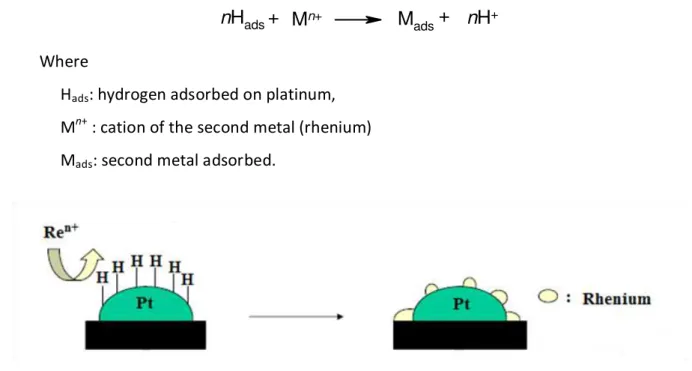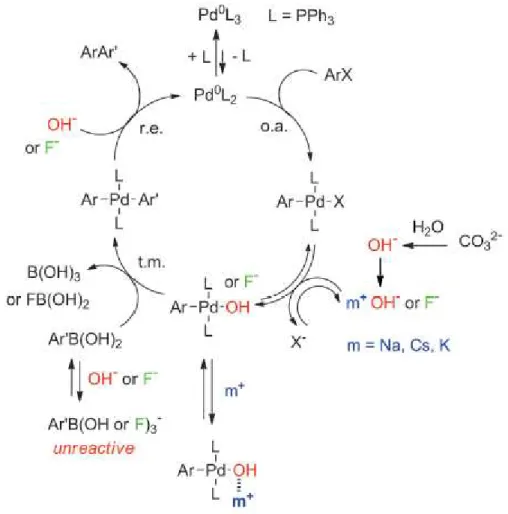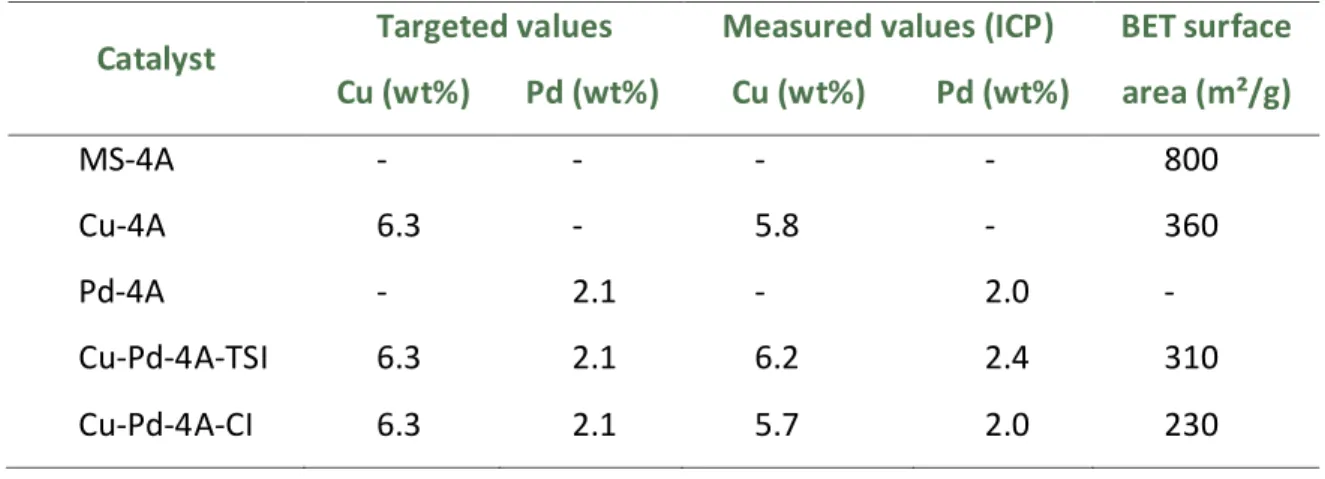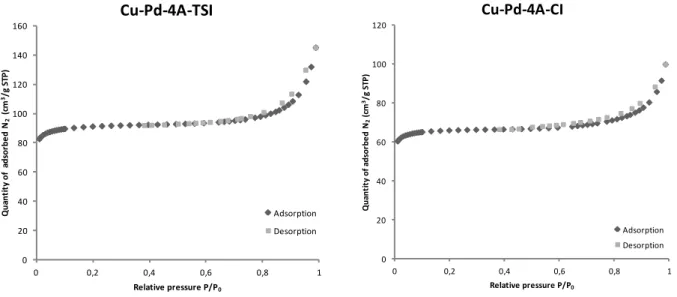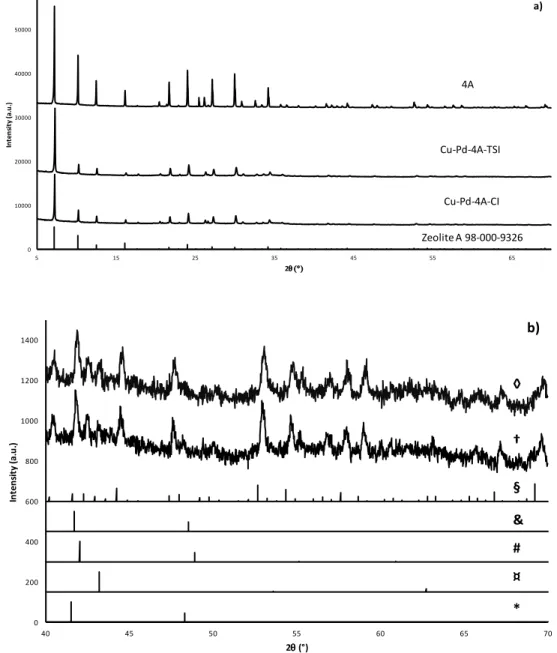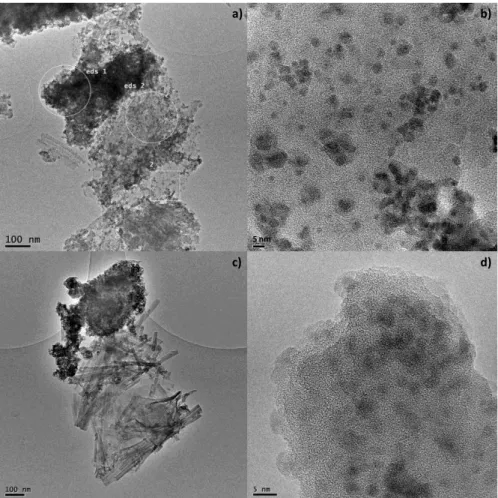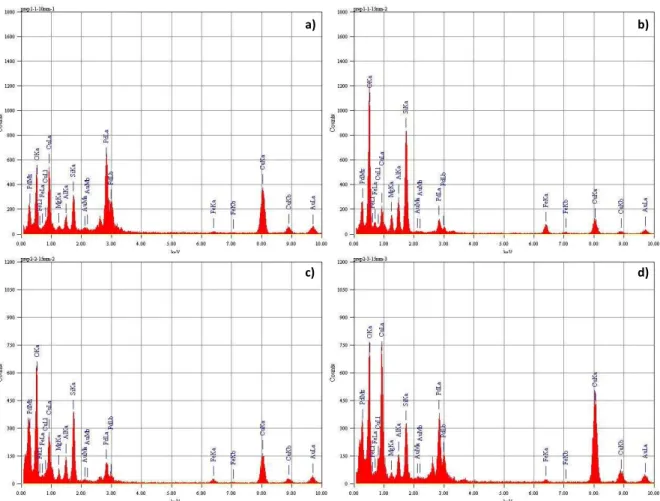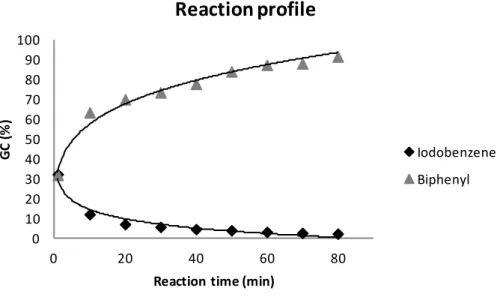THÈSE
Pour l'obtention du grade de
DOCTEUR DE L'UNIVERSITÉ DE POITIERS UFR des sciences fondamentales et appliquées
Institut de chimie des milieux et matériaux de Poitiers - IC2MP (Diplôme National - Arrêté du 7 août 2006)
École doctorale : Sciences pour l'environnement - Gay Lussac (La Rochelle) Secteur de recherche : Chimie organique, minérale, industrielle Cotutelle : Budapesti M szaki és Gazdaságtudományi Egyetem (Budapest)
Présentée par : Anna Fodor
Heterogeneous metal-catalysed C-C coupling reactions: research and development
Directeur(s) de Thèse : Laurence Pirault-Roy, Zoltán Hell Soutenue le 09 février 2016 devant le jury Jury :
Président László Poppe Professor, Budapest university of technology and economics
Rapporteur Hélène Lauron-Pernot Professeur des Universités, Université Pierre et Marie Curie - Paris 6 Rapporteur Attila Wootsch Regional director of ATEKNEA Solutions, Hungary
Membre Laurence Pirault-Roy Professeur des Universités, Université de Poitiers Membre Gwendoline Lafaye Maître de conférences, Université de Poitiers
Membre Zoltán Hórvölgyi Professor, Budapest university of technology and economics
Pour citer cette thèse :
Anna Fodor. Heterogeneous metal-catalysed C-C coupling reactions: research and development [En ligne]. Thèse Chimie organique, minérale, industrielle. Poitiers : Université de Poitiers, 2016. Disponible sur Internet
Heterogeneous metal-catalysed C-C coupling reactions:
Research & Development
PhD Dissertation
Prepared under the joint supervisor scheme between Budapest University of Technology and Economics
and
University of Poitiers
Author: Anna Fodor
Supervisors:
Dr. Zoltán Hell, associate professor
Department of Organic Chemistry and Technology (Budapest University of Technology and Economics)
and
Prof. Laurence Pirault-Roy, professor
Institute of Chemistry of Poitiers: materials and natural resources (IC2MP) (University of Poitiers)
3
Acknowledgements
This work was realised in the framework of a co-tutelle between a research group of the Department of Organic Chemistry and Technology at Budapest University of Technology (BME) and Economics and the Institute of Chemistry of Poitiers: materials and natural resources (IC2MP) at the University of Poitiers.
First of all I would like to express my gratitude to my supervisors Pr. Laurence Pirault-Roy and Dr. Zoltán Hell for their continuous help and support during my PhD studies, for their guidance in scientific and also in personal levels during these years. They helped me enormously to connect the two fields of chemistry together with their immense knowledge, thank you again.
Besides my advisors I would like to thank to my students Nóra Debreczeni, Ágnes Magyar, Anna Takács, Dóra Barczikai and Dóra Bezzegh who contributed to my thesis with their research and also helped me to develop as a tutor.
I would like to thank to the fellow workers of the pôle esu e physi ue of IC2MP namely to Stephane, Jean-Dominique, Lilian and Sandrine for their endless help and guidance in the evaluation of the characterisation results. I would like to thank the Bálint Analitika Kft. for the GC-MS measurements. Furthermore, I thank Claude for the lot of rapid reparation of fragile reactors and also the glaziers of Faculty of Chemical Technology and Biotechnology (BME).
I owe great thank to the French Government and Campus France for the financial support that made the co-tutelle possible, and also for the financial help of Campus Hungary, Richter Gedeon Centenáriumi Alapítvány, Ecole Doctorale Gay-Lussa , Fo datio de l Université de Poitiers, Sanofi-Aventis Chinoin and Pro Progressio Alapítvá y Pu go E ő ösztö díj.
Special thanks to all my fellow labmates Janó, Ági, Anna, Szilvi, Erika, Peti, and Béla in Hungary and to my collegues in Poitiers Ludo, Mélissandre, Mika, Nelly, Patrick, Bouchra, Zouhair, Asmaa, Fatima, Lide, Davina, Carmen, Irina, Vanessa, Soizic, Romain, Florent and Claire for welcoming me, for their contribution to my thesis and for the coffee breaks and lunch-breaks we have spent together.
4 Last but not least I would like to thank my dearest, all my friends from Hungary and from France who were always by my side during these years. Many thanks to my Valentin who was my best support wherever I was on the map and who held my hand all along this way. Heartfelt thanks to my parents and my whole family for their support, encouragement and their faith in me. (“zív ől köszönöm a szüleimnek és az egész családomnak a támogatásukat, biztatásukat és a belém vetett hitüket.)
5
Table of contents
1. INTRODUCTION ... 7
2. LITERATURE SURVEY ... 9
2.1. Heterogeneous catalysis... 9
2.1.1. Supported metal catalysis ... 12
2.2. Suzuki-Miyaura-coupling ... 33
2.2.1. The catalyst ... 34
2.2.2. The base ... 35
2.3. General conclusions and objectives ... 37
3. RESULTS AND DISCUSSION ... 39
3.1. Cu–Pd 4A supported bimetallic catalyst for the Suzuki-Miyaura-coupling, ... 39
3.1.1. Study of the surface and morphology ... 39
3.1.2. Study on the particle size... 42
3.1.3. Study of the reducibility of the catalysts by H2-TPR ... 44
3.1.4. Application in Suzuki-Miyaura-coupling ... 49
3.1.5. Characterisation of the recovered catalyst ... 61
3.2. Cu–Pd MgAlO supported bimetallic catalyst for the Suzuki-Miyaura-coupling ... 69
3.2.1. Study of the surface and morphology ... 69
3.2.2. Study on the particle size... 71
3.2.3. Study of the reducibility of the catalysts by H2-TPR ... 74
3.2.4. Study of the basicity by adsorption of carbon dioxide followed by FT-IR ... 77
6 3.3. Cu/Pd 1/1 bimetallic catalysts supported on 4A and MgAlO for the
Suzuki-Miyaura-coupling ... 91
3.3.1. Study of the surface and morphology ... 91
3.3.2. Study on the particle size... 94
3.2.4. Study of the reducibility of the catalysts by H2-TPR ... 97
3.3.4. Catalytic test in the Suzuki-Miyaura reaction ... 101
3.4. The Petasis-borono Mannich reaction ... 103
3.4.1. Introduction ... 103
3.4.2. Study of the Petasis-borono Mannich reaction of salicylic aldehydes ... 108
4. EXPERIMENTAL PART ... 114
4.1. Catalyst characterisation ... 114
4.2. Analysis of organic products ... 115
4.3. Catalyst preparation... 115
4.3.1. Catalysts supported on 4A ... 115
4.3.2. Catalysts supported on mixed oxides ... 116
4.3.3. Preparation of Cu/Pd 1:1 catalysts ... 117
4.4. The Suzuki-Miyaura coupling ... 117
4.5. The Petasis-borono Mannich reaction ... 122
5. THESIS POINTS ... 123
6. PUBLICATIONS ... 129
7
1. Introduction
Nowadays the development of new catalysts and reactants came into the limelight. These materials are preferably more active, more selective, favourably recoverable, easier to handle and environmentally more benign than classic substances.
Heterogeneous catalysis has an important role in organic chemistry. In the Handbook of Hete oge eousà Catal sisà theà edito sà stateà thatà in about 85 to 90 percent of all chemical manufacturing processes use is made of a catalyst. Furthermore, in about 80 to 85 percent of all of those catalytic processes, heteroge eousà atal sisà isà e plo ed.1 In consequence several heterogeneous catalysts were developed lately, which are cheap, toxic, non-corrosive, catalytically active, selective and stable even at mild reaction conditions. Some natural or synthetic materials can be readily used as a heterogeneous catalyst thanks to their acido-basic and/or redox properties; others are applied as a support for very active transition metal catalysts.
The supported heterogeneous catalysts possess several advances in applications for fine chemistry. Their applications in batch reactions have an advantage of easy separation by a simple filtration from the reaction medium, which makes the technology simple, short and economic. The facile recovery of the catalytic material facilitates reuse or recycling, therefore the synthetic applications of heterogeneous supported catalysts results in a green and economic process. Even thought a lot of progresses were made in the past years in the field of heterogeneous catalysis in fine chemistry; still the development and complete understanding of the catalytic cycle and catalytically active species in heterogeneous catalysis remained a challenge.
Coupling reactions are efficient tools for the coupling of organic compounds by using metal catalysts. Two or more compounds can be coupled to target the desired product. An important group of these reactions results in novel carbon-carbon bond formation. Even though from time to time several efficient, selective, stable, and relatively cheap methods emerge, carbon-carbon coupling reactions stay in the centre of attention; and research interest focuses on the development of catalytic systems for such reactions.
At the University of Poitiers, at the Institute of Chemistry of Poitiers: materials and natural resources (IC2MP) extensive research is focused on the development and application
8 of supported metal catalyst over decades. The catalyst preparation with a wide range of different methods, the catalyst characterisation (at fresh and used states) and application in several fields are the mastered research fields. The development of several bimetallic catalysts were realised such as Pt–Ge/Al2O3 for the transformation of hydrocarbons2, Ge–
Rh/Al2O3 catalyst for methylcyclopentane transformation3,4, and Ge–Rh/Al2O3 catalyst for
2,2,3-trimethylbutane hydrogenolysis5.
At the Budapest University of Technology and Economics, in the research group of the Department of Organic Chemistry and Technology the application of heterogeneous catalysts in organic syntheses has been studied over decades. Coupling reactions were carried out in the presence of a Pd0-MgLaO catalyst as Suzuki-Miyaura6, Heck7, and Sonogashira8 reaction. Furthermore, CuII-4A catalyst proved to be efficient for the multi-coupling of alkynes, aldehydes and amines (A3-coupling) to form propargylamines9, for the conversion of aldoximes into nitriles10, and for the conversion of nitriles into amides11.
In the framework of my thesis the knowledge of these research groups were combined resulting in a complementary and comprehensive study including the preparation of Cu–Pd bimetallic catalysts, study of the effect of supports, characterisation, application in organic reactions, a kinetic study, reuse of the catalyst, characterisation of the recovered catalyst and explanation of the catalytic activity and stability thanks to the surface analysis methods.
In my PhD dissertation first the applied supports, catalyst preparation methods and the Suzuki-Miyaura reaction are presented in the bibliographic part through selected examples of the literature. Then my own work is described including the preparation, characterisation of Cu–Pd bimetallic catalysts on 4A and on MgO/Al2O3, their application in the
Suzuki-Miyaura reaction studying the activity, selectivity and stability. Then Cu–Pd bimetallic catalysts are described with Cu/Pd 1/1 ratio and finally the tests in the multi-coupling Petasis-borono Mannich reaction of all the characterised catalysts are presented.
9
2. Literature survey
2.1 Heterogeneous catalysis
Catalysis is a phenomenon in which a relatively small amount of a foreign material, called catalyst, augments the rate of a chemical reaction without itself being consumed.12 Nowadays more than 90% of the industrial chemical productions require a catalyst.13 The significance of catalysis in sustainable processes is undoubted. The 9th point of the 12 principles of green chemistry says that Catalytic reagents (as selective as possible) are supe io à toà stoi hio et i à eage ts. 14 The use of a catalytic material can increase the
selectivity and lower the energy requirements in a process. The importance of catalysts is well represented by the data showing the increasing demand for petroleum refining, chemical synthesis, and polymerization catalysts; 2006: US $11.7, 2011 US $14.7 billion per year.15 Moreover, according to Freedonia Group16 demand for catalysts will grow with 4.8 percent per year to US $20.6 billion in 2018.
Catalysts can be classified according to several properties (origin, type, form, etc). From our point of view the most important classification is made by the phase of the reactants and the catalyst:
In homogeneous catalysis the catalyst and the reactants are in the same phase or they come into the same phase by interaction with the solvent of the reaction. This type of catalysis results in high turnover number (TON), high turnover frequency (TOF), high reaction rate, high selectivity and high yield. Their drawbacks are the lack of or the tediousness of recovery along with their high cost and the probable contamination of the final products caused by the catalyst or its components.17
In heterogeneous catalysis the catalyst and the reactants are in different phases. The separation of such catalysts from the reaction mixture is easy, they might be reusable, and they are usually cheaper than their homogeneous counterparts.17 Heterogeneous catalysts are stable at applications at higher temperature, which are usually needed to obtain the same conversion as with homogeneous catalysis. They also might be applicable under air,18 and they might be also applicable in flow reactors.19,20 Their disadvantage is that they can
10 erode the reactor, but this can be eliminated by the application of a continuous tubular reactor. Table 1 shows a short comparison between homogeneous and heterogeneous catalysis.
Table 1. Strong and weak points of homogeneous and heterogeneous catalysts21
Homogeneous Heterogeneous
Strong points
Defined on molecular level Separation, recovery, recycling Scope, variability Stability, handling
Preparation
High TOF, selectivity and activity
Many (hydrogenation) catalysts are commercially available
Weak points
Sensitivity (handling, stability) Characterisation (understanding on molecular level)
Productivity Preparation (might need special know-how), reproducibility Separation Diffusion to and within catalyst
The challenges in the heterogeneous catalysis thus are to prepare a reproducible cheap catalyst with a simple and preferably robust method which material is active, selective and stable in the widest range of reactions as possible. To obtain that, the most important tools are the catalyst characterisation methods, monitoring the reaction and catalyst characterisation at used state to understand the active sites and/or catalyst deactivation.
Heterogeneous catalysis includes several fields of chemistry (Figure 1). The catalytic materials are inorganic and/or organic compounds, catalysis itself is a part of chemical engineering and the catalytic cycles, etc. can be described by the laws of physical chemistry.
Heterogeneous catalysts can be classified as follows:
supported metal catalysts22-2522,23,24,25
zeolite encapsulated catalysts26-2926,27,28,29
colloid-nanoparticles30
11
Figure 1. Heterogeneous catalysis as an alliance of several fields of chemistry
The history of catalysis can be interpreted from several points of views, focusing on different aspects of catalysis (biocatalysis, heterogeneous, industrial etc.). Armor13 focused on the catalysis from a general point of view following the development into commercial processes. He noted that however catalysis was present and practiced at early societies – beer, wine, cheese, soap – its impact was not realised. The first man-made commercial catalyst appeared around 1750, followed by a gap until the 1800s. These included the production of key intermediates in large volumes:
In 1746 for sulphuric acid production in lead reaction chambers33
In 1831 the oxidation of SO2 on finely divided platinum33
In 1866 chlorine production over CuCl2 by O2– Deacon process33
In the First World War sulphuric acid was produced by V2O5-based catalyst33
In 1910 ammonia synthesis was carried out by the reaction of N2 and H2 over metal
catalyst at BASF33
In 1923 high pressure methanol synthesis was performed over a chromium and manganese oxide catalyst at BASF13
In 1913 Mittasch and Schneider patented the conversation of CO and H2 into liquid
hydrocarbons over cobalt oxide.34 This process was commercialised in the 1930s.35 These techniques might be considered as the first large scale applications of catalysts. They include the production of essential chemicals, such as sulphuric acid, chlorine, ammonia, methanol and liquid hydrocarbons. Due to the development of these procedures,
Heterogeneous Catalysis Physical Chemistry Organic Chemistry Inorganic Chemistry Chemical Engineering
12 a lot of advances were achieved promoted by the higher demands of polymers, transportation, fine chemicals, and environmental pollution remediation.
2.1.1. Supported metal catalysis
“uppo tedà hete oge eousà atal sts à o sistà of catalytic active sites on the surface of po ousàsolids,àk o àasà suppo ts .àTheseàsu sta esà a àp e e tà theàlossàofàtheà alua leà catalytic material. The solid support can be classified as follows17: charcoal36,37 (often called: activated carbon), zeolites and molecular sieves38,39, clays40,41, metal oxides19, 42, porous glass43,44, and organic polymers30.
The interaction between the supporting material and the catalytic active species can vary depending on the nature of both. Metal crystallites might be dispersed onto the solid support.38 On the other hand the metal can also be fixed to a solid support as a complex; that is, the ligands are covalently bound to the support.17
Two catalysts with the same design can still differ significantly because of different support types, variations or different preparation methods, leading to different catalyst parameters that sometimes correlate with the catalytic performances. The parameters influencing the activity of a metal are the specific surface area, dispersion, size of the crystallites, location in the pores of the support, oxidation state (reduced or unreduced) and sometimes location of the active site on a metallic crystallite (facets, edges and corners for structure sensitive reactions). Moreover, the support is often active and it adds other important parameters as its acid–base or redox properties, its ability to stabilise the particle size, its surface area and pore structure (pore volume, pore size distribution).21
Among the transition metal catalysts, the noble metals appear to be the most active, stable and selective. Due to their high cost, palladium is usually preferred as soon as possible as it is the cheaper noble metal and thus is one of the most versatile and widely applied metals. A summary about the synthetic application of homogeneous and heterogeneous palladium catalysed fine chemical transformations has been published recently (see Table 2).21
13
Table 2. Useful transformations for fine chemical synthesis catalysed by homogeneous and heterogeneous Pd catalystsa
Transformation21 Homogeneous Heterogeneous
Carbonylation of alkenes 3 4
Carbonylation of Ar-X 2 4
Carbonylation of dienes 2 -
Chemoselective hydrogenation of various functions 4 1
Cyanation of Ar-X 3 -
Debenzylation - 1
Dimerisation of dienes 2 -
Heck-reaction (and variants thereof) 1 3
Hydrogenolysis of C–X bonds - 1
Oxidation of alkenes (Wacker) 1 -
Oxidation of dienes 2 -
Reductions of various functions using hydrogen donors 4 2
Suzuki-Miyaura coupling reaction 1 3
Telomerization of dienes 2 -
Various C–C coupling reactions with R–X (R = allyl, aryl,
benzyl, vinyl) 1 3
a1: broad synthetic and/or industrial application; 2: broad synthetic application; 3: narrow synthetic application; 4: single examples
The data presented in Table 2 show the scope of homogeneous and heterogeneous palladium catalysts in 2001. During the past 14 years several improvements were achieved, for example the heterogeneous Heck and Suzuki reactions are already reported in broad synthetic applications.
The application of transition metal catalysis to large-scale synthesis requires safe, robust, and scalable technologies.45 In addition for pharmaceutical industry the high purity of active pharmaceutical ingredients (API) is also required. It contributed to several techniques to help the efficient scavenging of most metals46 and it also contributed to the development of heterogeneous catalysts.
14 Innumerable sort of supports exists and could be presented. In our study supported bimetallic catalysts were developed consisting of two metals and a support. In the following subsections two different supports – molecular sieves and mixed oxides – are discussed. Then the role of the bimetallic catalyst is presented.
2.1.1.1. Molecular sieves and zeolites
ásàO fo dàDi tio a àsa sà ole ula àsie eàisà aà stalli eàsu sta eà espe iall àaàzeolite à with pores of molecular dimension which permit the passage of molecules below a certain size47 The a eà ole ula sie e à efe sà toà thei à a ilit à ofà adsorption depending on their
pore size (Table 3).
Table 3. Classification of molecular sieves by pore size48
Pore diameter Type Composition Structure
0.3 nm 3A Potassium sodium aluminium silicate Zeolite A
0.4 nm 4A Sodium aluminium silicate Zeolite A
0.5 nm 5A Sodium and calcium aluminium silicate Zeolite A 0.8 nm 8A/10X Sodium and calcium aluminium silicate Zeolite X
1.0 nm 10A/13X Sodium aluminium silicate Zeolite X
MS-3A sieve permits the adsorption of water, hydrogen and helium.
MS-4A sieve adsorbs H2O, CO2, SO2, H2S, C2H4, C2H6, C3H6 and ethanol. It is a general
dryer of non-polar liquids and natural gases. It is an excellent absorber of carbon dioxide. MS-5A sieve adsorbs linear hydrocarbons up to n-C4H10, alcohols up to C4H9OH,
mercaptans up to C4H9SH. It does not adsorb iso-compound or ring structures with more
than four carbon atoms.
MS-8A (also known as 10X) adsorbs aromatics and branched hydrocarbons. It can be used for the removal of aromatic hydrocarbons, nitrogen compounds and sulphur compounds in the paraffin refining process.
15 MS-10A (known also as 13X) adsorbs di-n-butylamine and hexamethylphosphoramide (known as HMPA). It is also used for water pre-purification due to its high affinity for carbon-dioxide and water.
In the framework of our research MS 4Å (4A) was used as a support. It exhibits lots of advantages such as long lifetime, superior resistance to thermal, mechanical and osmotic shock, excellent stability, and low leaching.49 The microporous system of the molecular sieves has a positive effect during the catalytic cycle. Guisnet et al.50 described these effects as the follows:
reactant and product shape selectivity: within the microporous network the spatial constraints on the diffusion of reactant and product molecules occur
transition-state shape selectivity: the above mentioned effect on the formation of transition states
confinement effect: the confinement of reactant and product molecules within the microporous network
Besides the microporous system the following features enabled the wide range use of zeolites as catalysts and catalyst supports50: i) they possess a variety of active sites such as Lewis acid sites, Brønsted acid sites, redox-active sites and basic sites. These active sites can be adapted easily to the catalytic use for example by changing the operating parameters. ii) they have environmentally friendly properties as even the most acidic zeolite is not corrosive or hazardous.
History
In 1756 Crønstedt discovered stilbite51, the first known member of the group of crystalline microporous aluminosilicates. It was reported that upon heating this material released occluded water, this phenomenon gave the materials their general name, zeolite, after the Greek zeo (to boil) and lithos (stone). From 1777 through the 1800s several studies appeared about their adsorption properties, dehydration and reversible cation exchange.52 In 1840 Damour observed the reversible dehydration of zeolite crystals without affecting its morphology.53 In 1845 the hydrothermal synthesis of quartz by heating of a silica gel in an autoclave was reported by Schafhautle.54 In 1850 the ion exchange in soils was clarified by Way and Thompson.55 In 1858 the reversibility of the ion exchange was shown by Eichhorn.56
16 In 1862 the first hydrothermal synthesis of a zeolite was reported by St. Claire-Deville.57 In 1896 Friedel assumed a spongy framework for zeolite structure after the observation that dehydrated zeolites adsorbed various liquids.58 The first molecular sieve effect was reported in 1925 by Weigel and Steinhoff: they noted that dehydrated chabazite crystals rapidly adsorbed water, methyl alcohol, ethyl alcohol and formic acid but essentially excluded acetone, ether or benzene.59Theàte à ole ula àsie e à asàesta lishedà àMcBain in 1932 to define porous solid materials that act as sieves on a molecular scale.60 Thus by the
mid-sàtheàio àe ha ge,àadso ptio ,à ole ula àsie i gàa dàst u tu alàp ope tiesàofàzeoliteà minerals were reported in the literature as well as a number of reported syntheses of zeolites.61
The discovery of shape selective zeolites led to many novel, new chemical processes providing high selectivity to a wide variety of reactants and products, strong acid sites, and the use of materials with novel cation exchange or promotion effects. Major discoveries were developed by a number of industrial laboratories including Union Carbide, Exxon, Mobil Oil (now ExxonMobil), Shell, and others in the use of zeolites for hydrocarbon conversion:
I à theà s commercially viable routes to various zeolites were developed by Milton, Breck, Barrer, and Flanigen.13
In 1959 zeolites were used for petrol refining (isomerisation), while in 1962 catalytic cracking of heavy oil fractions was carried out.62
In 1960 the concept of shape selectivity was developed and applied in the production of aromatics.13
In 1974 Henkel replaced the environmentally harmful phosphates by zeolite A in detergents.61
Grace in 1969 discovered that the steaming of Y zeolite lead to ultra-stable Y zeolite.61
By 1977 22,000 tons of zeolite Y were used in the industry for catalytic cracking.61 Since their introduction as a new class of industrial materials in 1954, the annual market for synthetic zeolites and molecular sieves has grown immensely wordwide to 1.8x106 t in 2008.63 The major application areas of the molecular sieves are the followings: adsorbents, catalysts, and ion exchange materials. The largest single market is the detergent application
17 where zeolite A (and recently Type P) is used as an ion exchanger.61 Zeolites were also used in large volumes to further enhance the catalytic cracking and hydrocracking of petroleum feedstocks and the
Production of chemicals and fuels
Dewaxing of distillates and lubricant feeds
Oligomerisation of olefins
Xylene synthesis and isomerisation
Synthesis of ethylbenzene and PET, and
Gasoline and light olefins from methanol (Mobil Oil, 1976).13 The structure of the zeolites
Zeolites are crystalline aluminosilicates of alkali metals and alkaline earth metals, such as sodium, potassium, magnesium and calcium.64 Chemically they are represented by the empirical formula:
M2/nO·Al2O3·ySiO2·wH2O
where y is 2 – 200,
n is the cation valence and
w represents the water contained in the cavities of the zeolite.
Structurally, zeolites are complex, crystalline inorganic polymers based on an infinitely extending three-dimensional, four-connected framework of AlO4 and SiO4 tetrahedra linked
to each other by oxygen ions (Figure 2).
Figure 2. Structure of a zeolite – 4A MS 65
The connection of two AlO4-units is not possible (Löwensteins rule), thus the formation
of zeolites with Si/Al ≥à1 is permitted. Each AlO4 tetrahedron in the framework bears a net
18 contains intracrystalline channels or interconnected cavities which are occupied by the cations and water molecules. The cations are mobile and ordinarily undergo ion exchange. The water may be removed reversibly, generally thermally. The great part of the water might be eliminated between 100-200 °C while for the complete dehydration temperature around 350-400 °C is needed. The intracrystalline channels or cavities can be one- , two- or three-dimensionals. The preferred types have two or three dimensions to facilitate the intracrystalline diffusion in adsorption and catalytic applications.52 Figure 3 demonstrates how primary structure ([SiO4]4- and [AlO4]5-) units are assembled to form the corresponding
zeolites i.e. zeolite A, zeolite X, etc.
Figure 3. The building blocks of different zeolites
Natural zeolites
By origin zeolites are natural minerals, occuring typically as minor constituents in vugs or cavities in basaltic and other volcanic rock. Such occurrences limited their commercial use.61 Some zeolites occur in large, nearly mono–mineralic deposits suitable for mining. These have been commercialized for adsorbent applications (e.g. chabazite, erionite, mordenite and clinoptilolite).66
19 Mordenite and clinoptilolite are used in small volume as adsorbents.67 Natural zeolites are also used in bulk applications as fillers in paper, in pozzolanic cements and concrete, in fertilizers and soil conditioners and as dietary supplements in animal husbandry.52
The synthesis of the zeolites
Our research group has examined the applicability of 4A as a support for organic syntheses. In the followings thus the synthesis and application of this material is presented.
Zeolites manufactured in the highest volume are zeolite A (used extensively as ion exchangers in powdered detergents) and zeolite Y (used in the catalytic cracking of gas oil).52 During the preparation the different building blocks the mineralising media, the inorganic cations, and the use of organic or inorganic structure directing agents (SDAs) can be varied.68
Hydrothermal synthesis: Formation of the materials takes place primarily in aqueous media. Water has multiple roles during the synthesis: it solubilises the components in different degrees, develops the concentration and pH-dependent specification of each framework component and aids in ultimate stabilisation of the crystalline microporosity by coordinating of charge-balancing cations in the final product and by void filling part of the resulting microporosity.64
Figure 4. Schemes of zeolite syntheses61
Figure 4 represents schemes of zeolite syntheses. The early hydrothermal zeolite synthesis involved the active forms of alumina and silica, alkali hydroxide and water to form a gel. The temperature required for the crystallisation of the gel to zeolite was around
Silica Alkali Hydroxide Alumina Gel Zeolite ~100 C
Early Zeolite Synthesis
Silica Alkali Hydroxide + Quaternary Ammonium Salt Alumina Gel Zeolite 100-200 C
20 100 °C. To produce zeolites with higher Si/Al ratio siliceous zeolite, synthesis was developed. The production is similar to the previously described one. There are two important differences: the addition of the quaternary ammonium salt and the augmented crystallisation temperature (125-200 °C). The pH in both syntheses is between 10-14.61
Synthesis from metakaolin: A final approach for the synthesis of zeolites consists in the solid state topotactic transformation of layered structures into zeolites.69 For example for 4A synthesis kaolin type clays could be used. First the clay is calcined at 500-900 °C to obtain metakaolin (Al2Si2O7) which is reacted with NaOH resulting in the gel before crystallisation.
The following process is similar to that of hydrothermal synthesis.64
Applications of 4A
4A has been reported as an eco-friendly catalyst with versatile application.49 Furthermore, it is a stable material (resistant to mechanical, thermal and osmotic shock). In addition it is a readily available inexpensive material suitable for both organic and aqueous media. 4A molecular sieve can adsorb water, thus it is commonly used as drying agent. This capability allows its use in reactions where the elimination of water from the reaction media is needed or it has benign effect. Some examples for the application are described below:
4A was used in the enzymatic esterification of the flavonoid rutin stearate whereas the water content was a key parameter in organic medium. The 4A facilitated the reaction without altering the activity of the lipase.70
The Pauson-Khand reaction was reported to be promoted by 4A to obtain cyclopentenone ring system. It was also observed that depending on the type of molecular sieve the double bond isomeration process was different, generating the possible products in a different ratio (Figure 5).71
Figure 5. Synthesis of tricyclic cyclopentenones via the Pauson-Khand reaction
It was reported that in the 1,3-dipolar cycloaddition of alkenes with nitrones to give isoxazolidines the absolute stereochemistry of the product depended on the
21 presence or absence of 4A. Catalysed by magnesium(II)-bisoxazoline in the presence of 4A one enantiomer of the endo product was obtained with up to 82% ee whilst in the absence of 4A the mirror image enantiomer was obtained with up to 73% ee.72
Figure 6. 1,3-Dipolar cycloaddition of alkenes with nitrones
The asymmetric Diels-Alder reaction catalysed by a chiral titanium reagent in the presence of powdered 4A gave the optically active cycloadducts with high purity.73
Figure 7. Asymmetric Diels-Alder reaction catalysed by a chiral titanium reagent
The effect of the molecular sieves in the palladium-catalysed asymmetric Heck reaction was also described. The reaction was performed with 3A, 4A and 5A in the presence of different inorganic bases. It has been found that the 3A–K2CO3 system
22 was the most efficient in order to obtain high yield and ee. It was also suggested that the cation of the zeolite had an important role, as the K-containing systems were the most efficient.74
Sharpless described that 3A or 4A molecular sieve had a key role in the general procedure for the asymmetric epoxidation of allylic alcohols in the presence of tert-butyl hydroperoxide, titanium(IV)-isopropoxide and diethyl-tartrate.75 Furthermore, 4A molecular sieve has been described as a regio-and stereoselective catalyst in the epoxidation of allylic alcohols.76
Besides the applications as additive, promoter and scavenger 4A is also a stable and suitable support. Although the most widely used zeolites are other zeolite types (Y, X, ZSM-5, MCM-41, etc.) examples of heterogeneous catalysts supported on zeolite A, 4A can also be found in the literature.
A Cu–Ni bimetallic catalyst supported on 4A proved to be an efficient catalyst for the direct synthesis of dimethyl carbonate from CH3OH and CO2 in a continuous tubular
fixed-bed micro-gaseous reactor. It was reported that the large amount of basic sites of 4A facilitated the activation of CH3OH.77
KOH/4A was described for dimethyl carbonate synthesis. CH3OH, CO2 and propylene
oxide were reacted over KOH/4A. The catalyst was prepared by impregnation of the support by the aqueous solution of the base.78
Pd/MS3A and Pd/MS5A catalysts were prepared by the adsorption of Pd(OAc)2
precursor to the molecular sieve followed by in situ reduction to Pd0 and were studied for the selective catalytic hydrogenation of alkynes, alkenes, and azides containing further reducible functions such as nitro group.79
Palladium(II) chloride supported on 4A molecular sieve efficiently catalysed the Suzuki-Miyaura coupling of chlorobenzenes in the presence of tetrabutylammonium bromide and K2CO3.80
TiO2/4A nanocomposite was developed as photocatalyst for chemical oxygen
demand detection during waste water treatment.81
4A supported metallic catalysts were tested for combustion efficiency to treat volatile organic compounds. The order of efficiency proved to be Cu/4A > Co/4A > Mn/4A.82
23 2.1.1.2. Mixed oxides
Mixed metal oxides represent a group of inorganic materials. They consist only of metal cations and oxygen anions obtained by the thermal treatment of their precursors with different ratio. According to their chemical composition they can be ranked in five categories: aluminates, titanates, silicates, ferrites and chromites. Classification can be also made according their crystallite structure (e.g. spinel in case of magnesium-alumina).83
The structure of the mixed oxides
There are a wide range of possible crystal structures depending on the nature and preparation of the mixed oxides. Herein spinel, periclase and -alumina are presented, the structures which appeared in my work.
The general composition of spinel group minerals is AIIB2IIIO4, where AII is a member of a
II.A metal or a transition metal in +2 oxidation state and BIII is a group III.A metal or a transition metal in +3 oxidation state. The oxygen ions form a close-packed cubic lattice with 64 tetrahedral holes and 32 octahedral holes per cell. The so-called normal spinel contains Mg2+ and Al3+, its crystallite structure is shown on Figure 8.83
MgO has a cubic crystal structure where the coordination of Mg2+ and O2- is octahedral (Figure 8). Periclase is a mineral consisting of cubic MgO. Aluminium oxide (alumina) exists in several polymorphs. -Alumina has a cubic crystal structure containing octahedral and tetahedral coordinated Al3+. This structure is called a defect cubic spinel structure (Figure 8).
24
Figure 8. Crystal structure of spinel, periclase and -alumina
The synthesis of mixed oxides
One of the methods to obtain mixed oxides is the thermal decomposition of the corresponding layered double hydroxide (LDH). For example Mg-Al mixed oxide can be obtained from Mg-Al LDH by calcination at 500 °C.84
Another method is the treatment of powders. In this method, the corresponding metal hydroxides or salts are mixed. This process requires the mechanical blending of the often coarse raw materials to result the desired mixed oxide in a form of fine powder. The method
25 is energy consuming and it is difficult to obtain homogeneous, pure powder with narrow particle size distribution. As a consequence the reproducibility is also poor.83
One of the oldest preparation methods is the co-precipitation. The aqueous solution containing the cations is mixed with another solution containing the precipitating agent. The precipitate is separated by filtration, dried and subjected to thermal decomposition to result the desired mixed oxide. Determining parameters of the method are the pH, the temperature, the mixing rate and the concentration.83 For example to obtain magnesium-aluminium co-precipitate yielding spinel powder magnesium hydroxide and sodium aluminate can be used.85
In the sol-gel method an amorphous gel is formed from a solution followed by dehydration at relatively low temperature.86 This is a suitable method to obtain well-ordered porous structure. The best starting materials are metal alkoxides as they are readily hydrolysed and condensed to the corresponding hydroxide or oxide. The preparation method consists of the preparation of the double alkoxide, hydrolysis and thermal treatment. Preparation of spinel via sol-gel method is presented in Figure 9.87
Figure 9. Preparation of spinel from alkoxides: (1) double alkoxide formation; (2) hydrolysis; (3) condensation87
The non-conventional methods are powder preparation methods excluding the mixing of the starting materials, co-precipitation or sol-gel methods.88 Hydrothermal synthesis provides a route to obtain controlled particle size. It includes aqueous solutions treated between the boiling point and critical temperature of water at high pressure up to 15 MPa to achieve very fine anhydrous crystalline powders.89 This process is limited to spinel-type
26 material and titanate production. Spray drying assures the rapid vaporization of the solvent from the solution of the cations, while during freeze drying the solvent is slowly sublimated. These processes permit the complete control of homogeneities, impurities and fine particles.83
Applications of Mg-Al mixed oxides
As during my preparative work MgO-Al2O3 mixed oxides were only used as support,
herein literature examples concerning their applications are presented.
Mixed oxides are widely used as fillers or pigments in pulp and paper, paint or plastic industry whereas their utilization in ceramic and electronic technology is widespread. They are heat-resistant, chemically inert and light pigments.83 Their synthetic application can be distributed in two groups. They can be used as solid bases90,91 or as inorganic supports for transition metals.92-96
Examples for applications as solid bases:
Magnesium-aluminium mixed oxides were prepared by sol-gel and co-precipitation methods. Their activity depended on the Mg/Al ratio and the preparation method in the liquid-phase methylation of m-crezol.90
The effect of the thermal treatment and medium was studied on the preparation of Mg-Al mixed oxide from layered double hydroxide. The catalysts were found to be efficient in the citral/acetone aldol condensation.91
Examples for application as supports for transition metals:
Ni-MgO-Al2O3 with different Mg/Al ratios were used in carbon dioxide reforming of
methane. The support was synthesised by sol-gel method and by co-precipitation to compare their activity. The catalyst prepared by the sol-gel method was more resistant to coke formation. Higher catalytic performance was observed with Ni– MgO–Al2O3 catalyst exhibiting a MgO/(MgO + Al2O3) ratio of 0.44–0.86.92
Ni and Ni-Au catalysts supported on Mg-Al mixed oxide prepared by co-precipitation were applied in the partial oxidation of methane for synthesis gas production.93 Ru supported on Mg-Al mixed oxide was also reported for methane steam reforming.94
27
Hydrogenolysis of glycerol was reported over a Pd–Cu bimetallic catalyst supported on Mg-Al mixed oxide prepared via the thermal decomposition of layered double hydroxides.95
Furthermore, MgO-Al2O3 mixed oxides showed promising properties in a study96 where
the basic properties of the mixed oxides with different ratios were also reported. This classification was made according to the carbon dioxide adsorption measured by FTIR. The rank of the supports based on the amount of the basic sites was as follows: MgO > 0.25 Al > 0.5 Al ≈à . à álà>àál2O3. Unfortunately, pure MgO support exhibits a poor specific surface
area, whereas 0.25 Al presents a good compromise between an important surface area and interesting basic properties.
2.1.1.3. Bimetallic catalysts
One, two or more metals can be introduced on the support resulting the formation of monometallic, bimetallic and multimetallic catalysts, respectively. The surface state of bimetallic catalysts depends strongly on the preparation and activation procedures.
Metal catalysis has a dominant role in the modern organic chemistry. In particular, cross-coupling reactions allow bond formations, which have previously been impossible to perform.97,98 Buchwald et al. reported that reactions with FeCl3 may in certain cases be
significantly affected by trace quantities of other metals, particularly copper.99 Research interest in bimetallic catalysts is mainly due to their tuneable chemical/physical properties by a number of parameters like composition and morphostructure.100 Compared to monometallic catalysts, the bimetallic or multimetallic ones may show better performances as it concerns activity, selectivity and stability. In the literature numerous bimetallic catalysts have been shown to exhibit unique properties which are different from those of their monometallic counterparts.101,102
28 The structure of the bimetallic catalysts
The properties of a bimetallic catalyst depend on the nature of the support and on the position of the two metals on the surface and/or in the bulk phase of the catalyst. Figure 10 represents the most common types of positions of the two metals. The two metals can exist on the support separately, without any interaction. M1 can decorate the surface of M2, which can lead to the formation of core-shell bimetallic particles. Janus-type particles can also been made whereas the particles contain the two phases separately. Furthermore, the formation of alliy is also possible containing the metals orderly or randomly disordered. It is important to specify theàe a tà ea i gàofàtheà o dà alloy . This term was introduced as by Ponec and Bond103 considering thatà allo sà a eà ...a à etalli à s ste sà o tai i gà t oà o à more components, irrespective of their intimacy of mixing or the precise manner in which thei àato sàa eàdisposed... .à
Figure 10. Possible compositions of bimetallic catalysts
The preparation of bimetallic catalysts
The basic preparation methods are identical with those of monometallic catalysts i.e. impregnation and ion exchange. Although for the architecture of controlled bimetallic particles further methods were also developed.
29 Impregnation
Due to its easy operation and inexpensiveness, impregnation has been widely used. Wet impregnation (WI) requires the support to be put into a precursor solution to achieve the targeted loading of active components. Incipient wetness impregnation (IWI) limits the volume of the precursor solution to just match the pore volume of the catalyst support. By this manner the loading of active components in the pore matrix of the catalyst support is maximised. For bimetallic catalysts either co-impregnation (CI) or two-step impregnation (TSI) can be used104 (Figure 11).
Figure 11. General scheme of two-step impregnation and co-impregnation at laboratory scale
The impregnation method may result in broad distribution of metal particle size and uneven element composition. In addition in bimetallic catalysts when an alloy is to be formed, this method - despite its simplicity and low cost - sometimes can fail to produce metal-metal interaction.
Ion exchange
During ion exchange an ion in an electrostatic interaction with the surface is replaced by another species. The support containing ion A is introduced into the solution of the desirable ion B. Ion A thus is replaced by the gradually penetrating ion B into the pores of the support.105 This method is limited by the isoelectric point of the support, the nature of ion B (anion or cation) and a reasonable pH avoiding the destruction of the support.
Further methods
Recently, various methods of metal addition have been used in order to optimise the interaction between the two metals. Among them, one can mention:
30
Chemical Vapor Deposition (CVP): The substrate is exposed to the volatile precursors. The desired deposit is produced by reaction and/or decomposition on the substrate surface.106
Electroless deposition: It is the process of depositing a coating with the aid of a chemical reducing agent in solution, and without the application of external electrical power.107
Bimetallic nanoparticles can be synthesised before their deposition on the surface of the support. These methods include microemulsion108, microsuspension and dendrimer mediated109 syntheses.
Controlled surface reactions have two main groups: organometallic grafting and surface redox reaction both resulting in the formation of specific metal-metal interaction.
Organometallic grafting consists of the reaction of organometallic compounds with the pre-adsorbed hydrogen on the surface of the parent metal. Thus organometallic compound anchored to the surface of parent metal is obtained. The bimetallic particles are obtained after a reduction at a temperature corresponding to the reducibility of the metals.110,111
Surface redox reactions take place in the liquid phase between the pre-reduced 'parent' metal or a reducing agent selectively adsorbed on the 'parent' metal, and the solution of the oxidized form of the modifier.112 One of the methods for surface redox reaction is proposed by Barbier et al. They presented this preparation as an example of creating metal-metal interaction, to generate bimetallic entities. In order to produce them, the support has to be covered with one of the desired metals. Then a selective reaction has to take place between the second metal and the monometallic particles initially present on the support. Such a modification can result in surface redox reactions that occur in the liquid phase between the chemically pre- edu edà pa e t à etal or a reducing agent selectively pre-adsorbed on the
parentà etal,àa dàtheào idised form of the second metal introduced via a solution.113
An example for this method is presented in Figure 12 for the preparation of bimetallic Pt-Re catalysts by surface redox reaction. Hydrogen was adsorbed on a 'parent' monometallic platinum/alumina catalyst and the cation of the second metal was introduced as a solution.
31
nHads+ Mn+ Mads+ nH+
Where
Hads: hydrogen adsorbed on platinum,
Mn+ : cation of the second metal (rhenium)
Mads: second metal adsorbed.
Figure 12. Preparation of Pt-Re catalysis by surface redox method114
It was found that the partial pressure of hydrogen, the temperature, the concentration and the nature of the rhenium salt, and the dispersion of the 'parent' monometallic platinum catalyst strongly influence the kinetic and the extent of rhenium deposition by catalytic reduction.114
The methods described above have been proposed as alternatives to the impregnation method for preparing bimetallic catalysts because they allow the selective deposition of promoters onto the surface of a parent metal.115
Applications of bimetallic catalysts in general
As I have examined palladium-copper bimetallic catalysts here some published palladium-copper bimetallic catalysis will be presented.
Coq and Figueras105 described that the effect of the co-metal on the catalytic performance of the Pd-containing bimetallic catalyst cannot be interpreted. The benign effect of the co-metal is determined by electronic and geometric effects and/or mixed sites. Moreover catalytic properties can be affected by the preparation method as it influences both spatial distribution of the metals and their chemical state. The identification of active sites is crucial in the selection of the most suitable synthesis method for catalyst preparation.
32 Copper–palladium bimetallic catalysts can be applied in many fields and reactions. Some examples are given below:
The selective hydrogenation of acetylene in an ethylene-acetylene mixture with Cu– promoted Pd catalyst115 was reported.
Hydrogenation of 3,4-epoxy-1-butene was studied over Cu–Pd/SiO2 catalysts
prepared by electroless deposition.107
Selective hydrogenation of carvone and o-xylene over Pd–Cu catalysts prepared by surface redox reaction was reported.116
From our point of view application of bimetallic catalysts in organic reactions is the most important. There are several examples for homogeneous copper-palladium catalysts in organic synthesis. These reactions include Sonogashira-reaction117, indole formation118, domino allylation and cyclisation of ortho-alkynylbenzaldehydes119, synthesis of aromatic heterocycles120, etc. Heterogeneous catalysts are seldom chosen in organic syntheses in general and in particular the heterogeneous Cu–Pd bimetallic catalysts. Some examples are presented in what follows:
Cano121 developed a magnetite supported palladium-copper catalytic system for the domino Sonogashira-cyclization processes to obtain indoles. Meanwhile the reaction stopped after the formation of the corresponding Sonogashira-coupled product by moderate yield from phenylacetylene and 2-iodoaniline. The targeted indole derivative could be only obtained by equimolecular amount of zinc-bromide. Recycling of the supported catalyst also meant a problem, as the activity of the recovered catalyst dropped significantly because of the leaching of the metals.
Several publications reported nano-Pd/Cu systems as efficient catalysts for the Sonogashira-reaction122,123,124 or electrochemical reaction such as electrooxidation of formic acid.125 It was shown, that these catalysts possessed an exhibited catalytic activity compared to their monometallic counterparts and a positive synergistic effect of Pd and Cu was also described.122,125
Further examples for the Cu–Pd catalysed Suzuki-Miyaura reaction are discussed in Chapter 2.2.1.
33
2.2 Suzuki-Miyaura coupling
The formation of novel carbon-carbon and carbon-nitrogen bond have an important role in theoretical as well as in synthetic organic chemistry. Over the last few decades, the formation of carbon–carbon bonds by the transition-metal-catalysed cross-coupling of carbon nucleophiles with carbon electrophiles has evolved into a key synthetic approach for the construction of complex organic molecules.126 This reaction type enables the selective connection of even highly functionalized substrates at positions defined by two leaving groups of opposite polarity. Numerous cross-coupling procedures have been developed, for example Suzuki127, Stille128, Sonogashira117, Heck129, and Negishi130 reactions. The importance of cross coupling reactions was confirmed in 2010 when the Nobel Prize in Chemistry was awarded jointly to Richard F. Heck, Ei-ichi Negishi and Akira Suzuki fo palladium-catalysed oss oupli gs i o ga i sy thesis . A coupling reaction is therefore chosen for a given application on the basis of the availability, stability, and price of the required substrates and catalyst, as well as the efficiency, selectivity, and convenience of the reaction protocol.97
The Suzuki coupling is a palladium-catalysed cross-coupling reaction between organoboron compounds and organic halides or triflates (Figure 13).
Figure 13. General scheme of the Suzuki-Miyaura coupling
It serves as an important tool for biaryl synthesis. Biaryl units are present in natural products, pharmaceuticals, herbicides, conducting polymers, liquid crystals and molecular wires.131 The Suzuki-Miyaura coupling is in the centre of the catalytic research as it provides a facile, selective way to a wide range of products. Mild reaction conditions are applied and the reaction partners are easily available molecules. Moreover, the inorganic by-product of the reaction is non-toxic and easily removable from the reaction mixture thereby making the Suzuki coupling suitable not only for laboratories but also for industrial processes.132
34
2.2.1. The catalyst
Since the first publication of this reaction127 several attempts were made and a great number of publications and reviews were released reporting homogeneous133,134,135,136 and heterogeneous137,138,139,140 pathways to perform this coupling. Suzuki coupling was also the subject of several reviews providing extensive knowledge on certain fields as heterogeneous palladium catalysis17, large scale application for pharmaceutical production141 and efficient, selective and recyclable palladium catalysts142, etc. Furthermore, studies were also made on the isomer effects in this reaction. Schmidt and Riemer143 examined the Suzuki reaction of halophenols and phenol boronic acids and revealed that certain combinations of boronophenols and halophenols are disfavoured. Zou et al.144 found o-substitution effect as a reason of low activity caused by steric hindrance and absorption associated with heterogeneous Pd/C.
Ligand-free heterogeneous catalysts are well reported to carry out coupling reactions, for example mesoporous silica-supported Pd catalyses Suzuki-Miyaura and Heck reactions145, Pd supported on a polyionic resin is applicable in these reactions and also in the Sonogashira-reaction146.
Only few examples were published for this coupling concerning Cu–Pd bimetallic catalysts.147-153 As a homogeneous route Cu2O was proved to be a remarkable co-catalyst in
the Pd(PPh3)4 catalysed reaction of arylboronic acids with ethyl bromoacetate.147
Furthermore, a Suzuki-type C-H arylation of azoles was reported with Pd(OAc)2, Cu(OAc)2 and
CuCl.148 The beneficial effect of the CuCl was reported for the Pd(OAc)2 catalysed Suzuki
coupling of 2-heterocyclic boronates.149 Liebeskind et al. reported a palladium catalysed copper mediated route for the coupling of aryl and alkenyl iodides and arylboronic acids in the absence of base with copper(I) thiophene-2-carboxylate as mediator.150 The use of a copper based support proved also to be suitable for supporting Pd nanoparticles on CuO, which were described as efficient catalyst for the reaction.151 The application of copper nanoclusters and Cu/Pd nanoclusters has also been reported for this reaction.152 In a patent Pd/Cu colloids in different molar composition were examined and it was found that the Pd(50%)/Cu(50%) composition was the most efficient.153 The metal loadings in these reactions are generally 5 mol% Pd-salt and 10-100 mol% Cu-salt.
35
2.2.2. The base
The most frequently used bases for the coupling are NaOEt127, NaOH154, KOH155, K3PO4156, Cs2CO3157, K2CO3158, Na2CO3159. Their quantity varied between 1.1-10 equivalents.
However the Suzuki-type coupling has also been reported without a base150,160-162 but in this case the application of exotic reaction partners such as triarylantimony diacetates and tetra(alkoxo)diborons 160 ; organo-antimony or -bismuth compounds 161 and hydroxy(tosyloxy)iodobenzene162 were required.
Figure 14 shows the catalytic cycle of the palladium catalysed Suzuki-Miyaura reaction where inorganic base and ligand were used.163 The first step is the oxidative addition of the palladium to the halide to form Ar-Pd(L)2-X organopalladium species. Then its reaction with
the base results in the formation of Ar-Pd(L)2-OH which then undergoes transmetallation.
The carbon-carbon coupled product is the result of reductive elimination.
36 The role of the inorganic bases and their charge-balancing cations was thoroughly studied by Amatore.163,164,165 It was found that inorganic bases do not play the role of base but they serve as a ligand for aryl-palladium(II) complexes. They play four kinetically antagonistic roles. These anionic bases take part in the formation of the reactive species in the rate-determining transmetallation step and they catalyse the reductive elimination of the corresponding intermediate, which are both positive roles. As negative function they form unreactive aryl boronates and they can form complexes with the countercation before the transmetallation step. Furthermore, it was proposed that in a Suzuki-Miyaura reaction with aryl iodides and activated aryl bromides the rate-determining step was the transmetallation which can be promoted as follows:
by selecting the best base (OH- > CO32-)
by the optimisation of the ratio [OH-]à/à[á B OH2] and
37
2.3. General conclusions and objectives
In this bibliographic study the importance of the nature of the catalyst for application in organic synthesis can be observed. Many preparation methods and supports were presented which influence the properties of the catalysts. The need for stable heterogeneous catalyst for organic syntheses was also described.
Taking into account these observations the aim of this interdisciplinary research was to develop a relatively simple, cheap and reproducible route to prepare catalysts containing a noble metal in smaller quantity and a transition metal. This bimetallic catalyst preferably possesses good activity, stability and selectivity in the Suzuki-Miyaura carbon–carbon coupling, and possibly in further reactions. Our goal was furthermore to evidence the catalytically active species by the help of physico-chemical characterisations of the catalysts in fresh and used state. To go even further our wish was to examine how the nature of the support influences the surface properties of the catalysts affecting possibly its catalytic activity, stability and the kinetics of the reaction.
As Pd appears to be active for Suzuki coupling, it was chosen for our study. Due to its costs and according to bibliography concerning the benefic effect of copper, we decided to mix Pd and Cu. Our aim was to use the noble metal in lower quantity along with a higher amount of the inexpensive transition metal. So that the metal loading was selected to be 0.2 mmol Pd and 1 mmol Cu/1 g support. The way of preparation was chosen to be wet impregnation as it is a simple, economic and reproducible method permitting the possible proximity of the two metals. The supports were decided according to previous studies on the excellent activity of Cu-4A in several organic transformations9-11 and on the acido-basic properties on the MgO-Al2O3 mixed oxides96.
For these reasons eight bimetallic catalysts were prepared (Cu-Pd-4A-CI, Cu-Pd-4A-TSI, Cu-Pd-MgAlO-CI, Cu-Pd-MgAlO-TSI, Pd(0.2)-4A-CI, Pd(0.2)-4A-TSI, Cu(0.2)-Pd(0.2)-MgAlO-CI and Cu(0.2)-Pd(0.2)-MgAlO-TSI) along with their monometallic counterparts. They were characterised by Inductively Coupled Plasma Optical Emission Spectrometry (ICP-OES), Brunauer–Emmett–Teller (BET) approach, X-ray Diffraction (XRD), Transmission Electron Microscopy (TEM), Energy-Dispersive X-ray Spectroscopy (EDS) and adsorption of carbon dioxide followed by Fourier transform infrared spectroscopy (FT-IR) at
38 fresh and recovered state. The catalytic test for their activity, stability and selectivity were performed in the Suzuki-Miyaura reaction and in the Petasis-borono Mannich multicoupling reaction.
39
3. Results and Discussion
3.1 Cu
–Pd 4A supported bimetallic catalyst for the
Suzuki-Miyaura-coupling
[D1],[D2]Four catalysts were prepared by wet impregnation: Cu-4A, Pd-4A as monometallic catalysts and Cu-Pd-4A bimetallic catalysts. The bimetallic catalysts were prepared in two ways: by the Two-Step Impregnation (TSI) of the precursors (Cu-Pd-4A-TSI) and by Co-Impregnation (CI) by the two metal salts (Cu-Pd-4A-CI). The catalysts were characterised by ICP, BET, XRD, TEM, EDS and TPR.
3.1.1. Study of the surface and morphology
The ICP-OES analysis showed that the measured values were in accordance with the expected ones. A slightly higher metal content in the case of successive impregnation was observed comparing to co-impregnation (Table 4). Each monometallic catalyst was also subjected to the measurement to determine the real metal content on the support.
Table 4. Metal content and BET surface area of the mono-and bimetallic catalysts
Catalyst Targeted values Measured values (ICP) BET surface area (m²/g) Cu (wt%) Pd (wt%) Cu (wt%) Pd (wt%) MS-4A - - - - 800 Cu-4A 6.3 - 5.8 - 360 Pd-4A - 2.1 - 2.0 - Cu-Pd-4A-TSI 6.3 2.1 6.2 2.4 310 Cu-Pd-4A-CI 6.3 2.1 5.7 2.0 230
[D1] A. Fodor, Z. Hell, L. Pirault-Roy, Copper(II)- and palladium(II)-modified molecular sieve, a
reusable catalyst for the Suzuki-Miyaura-coupling, Applied Catalysis A 484 (2014) 39-50.
[D2] A. Fodor, Á. Magyar, D. Barczikai, L. Pirault-Roy, Z. Hell, Study of the structure-activity
relationship in a heterogeneous copper-palladium catalysed Suzuki-Miyaura coupling, Catalysis Letters 145 (2015) 834-839.
40 According to BET measurements the specific surface area of the support 4A molecular sieve changed from 800 m2/g to 310 m2/g in the first case (TSI) and to 230 m2/g in the second case (CI) (Table 4). This can be explained by the difference in the preparation method. In case of TSI it is a two-step process whilst CI takes place in one step. The production in several steps allows the sintering of the particles leading to more free sites and thus higher specific surface area.
The pore volume of the molecular sieve decreased from 0.3 cm3/g to 0.204 cm3/g in case of TSI and to 0.142 cm3/g when the catalyst was prepared with CI for same reasons as above. Nitrogen molecules cannot fill the pores of the support. The hysteresis at high P/P0
indicates pores with the following diameters: 26 Å (TSI) and 25 Å (CI) using BJH measurements. Figure 15 shows the adsorption isotherms of the two catalysts.
Figure 15. Adsorption isotherms of Cu-Pd-4A-TSI and Cu-Pd-4A-CI
According to the IUPAC classification of adsorption isotherms for gas-solid equilibria166 the catalysts belong to Type IV. Characteristic features of the Type IV isotherm are its hysteresis loop, which is associated with capillary condensation taking place in mesopores, and the limiting uptake over a range of high p/p°.166 Type IV characterises mesoporous adsorbents with strong and weak affinities respectively. For lower temperatures they show adsorption hysteresis.167 0 20 40 60 80 100 120 140 160 0 0,2 0,4 0,6 0,8 1 Q u an ti ty o f a d so rb e d N2 (c m 3/g S TP ) Relative pressure P/P0 Cu-Pd-4A-TSI Adsorption Desorption 0 20 40 60 80 100 120 0 0,2 0,4 0,6 0,8 1 Q u an ti ty o f ad so rb e d N 2 (c m 3/g S TP ) Relative pressure P/P0 Cu-Pd-4A-CI Adsorption Desorption
